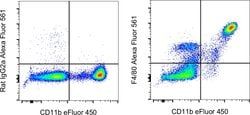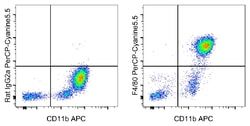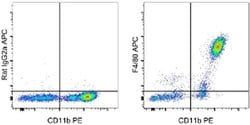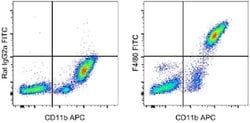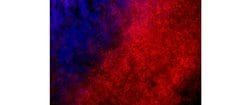F4/80 Monoclonal Antibody (BM8), eFluor™ 570, eBioscience™, Invitrogen™
Rat Monoclonal Antibody
Manufacturer: Fischer Scientific
The price for this product is unavailable. Please request a quote
Antigen
F4/80
Concentration
0.2 mg/mL
Classification
Monoclonal
Form
Liquid
Regulatory Status
RUO
Formulation
PBS with 0.09% sodium azide; pH 7.2
Gene Alias
ADGRE1; Adhesion G protein-coupled receptor E1; Adhesion G protein-coupled receptor E2; cell surface glycoprotein EMR1; cell surface glycoprotein F4/80; DD7A5-7; EGF-like module containing, mucin-like, hormone receptor-like 1; EGF-like module containing, mucin-like, hormone receptor-like sequence 1; EGF-like module receptor 1; EGF-like module-containing mucin-like hormone receptor-like 1; EGF-TM7; Emr1; EMR1 hormone receptor; F4/80; Gpf480; Ly71; lymphocyte antigen 71; TM7LN3
Gene Symbols
ADGRE1
Primary or Secondary
Primary
Content And Storage
4° C, store in dark, DO NOT FREEZE!
Gene
ADGRE1
Clone
BM8
Applications
Immunocytochemistry, Immunohistochemistry (Frozen), Immunohistochemistry (Paraffin)
Conjugate
eFluor 570
Host Species
Rat
Target Species
Mouse
Gene Accession No.
Q61549
Gene ID (Entrez)
13733
Isotype
IgG2a κ
Purification Method
Affinity chromatography
Product Type
Antibody
Description
- Description: The BM8 monoclonal antibody reacts with mouse F4/80 antigen, an approximately 160 kDa surface receptor
- It belongs to the EGF-TM7 family of proteins
- As such it contains seven EGF-like domains on its extracellular N-terminus, seven transmembrane spanning sequences, and an intracellular C-terminal domain showing homology to other TM7 superfamily members
- The F4/80 antigen is expressed by a majority of mature macrophages and is one of the best markers for this population of cells
- However, other cell types, such as peritoneal eosinophils, Langerhans cells, and some other dendritic cell subtypes, have been reported to express this antigen as well
- Expression of F4/80 commences during early myeloid development in vivo and can be upregulated on BM cells stimulated in vitro with M-CSF
- Some populations of macrophages, especially in the lymphoid microenvironment, may be devoid of F4/80
- Applications Reported: This BM8 antibody has been reported for use in immunohistochemical staining of frozen tissue sections, immunohistochemical staining of formalin-fixed paraffin embedded tissue sections, and microscopy
- Applications Tested: This BM8 antibody has been tested by immunohistochemistry of formalin-fixed paraffin embedded tissue using pronase antigen retrieval and can be used at less than or equal to 5 μg/mL
- It is recommended that the antibody be carefully titrated for optimal performance in the assay of interest
- F4/80 Monoclonal antibody specifically detects F4/80 in Mouse samples
- It is validated for Immunocytochemistry, Immunohistochemistry (Frozen), Immunohistochemistry (Paraffin).

